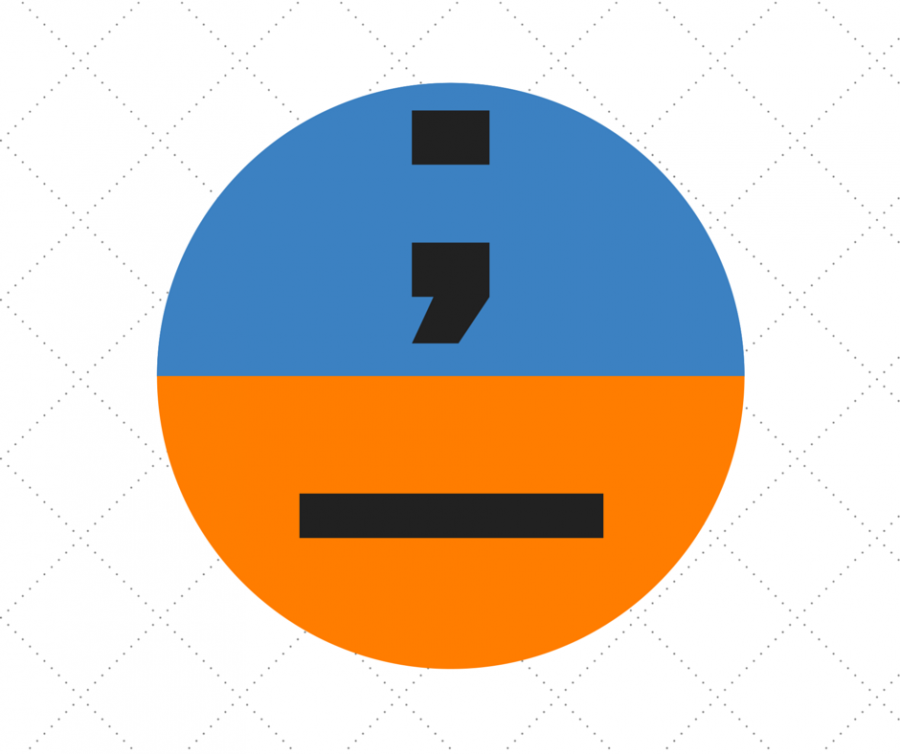In Defense of Semicolons and Em-Dashes
May 14, 2018
If there’s one thing students dislike more than tedious calculations, it’s endless grammar exercises that don’t seem to result in much besides a cramping hand and a dull pencil. Learning grammar rules, however, is critical for anyone seeking to improve his or her writing style or just score higher on the SAT or ACT.
Amongst students, two of the most abused forms of grammar are the semicolon and the em-dash. This is likely because using them looks professional, but the opposite effect ironically occurs when they’re used improperly. Understanding both of their many uses, then, can help in writing more cohesive sentences that just might make you sound smarter than you actually are (which, as we know, is the only real purpose of either punctuation mark).
Firstly, a semicolon isn’t a way to simply make your run-on sentence seem “better.” There are proper times and places for their usage. Secondly, this “:”? That’s a colon, not a semicolon. Colons are also abused, but we’ll talk about that some other time. Semicolons are used to connect two related complete thoughts. Below, we’ll give an example of a sentence that uses a semicolon properly and one that only attempts to.
CORRECT USAGE: Ethan had never had a girlfriend and felt isolated from society; thus, he signed up for Tinder, Bumble, and OKCupid all in the span of an hour.
INCORRECT USAGE ONE: Ethan liked baseball; the cake is fantastic.
This sentence does connect two complete thoughts. In no way, however, are they related. The cake sure is fantastic, and Ethan might love baseball with all his heart, but the existence of one doesn’t imply that of the other.
INCORRECT USAGE TWO: Ethan is depressed; taking medications like Prozac.
You can (kind of) see the relation between the clause and the phrase, but the second one is an incomplete clause. As such, a semicolon is also abused here.
What trips many people up regarding semicolons is their appearance in lists. A semicolon can be used to separate objects in a list for the sake of clarity, which usually occurs when the objects are described in such a way that requires the use of commas. Below is an example of this:
(SOMEHOW) CORRECT USAGE OF A SEMICOLON: Ethan needs to accomplish many tasks this week, such as studying for the AP World History exam; reading six chapters of 1984, since so far, he’s failed to even start the book; doing his chemistry homework, hopefully before three in the morning; and finding a way to truly love himself.
As you can see, this sentence is extremely long, yet it technically makes grammatical sense.
Now, on to em-dashes. An em-dash can be used properly by either putting a space before and after two dashes in a row (eg. I’m tired—I think I need a nap) or, if you’re using an Apple product, by pressing the shift-option-dash keys in rapid succession.
Em-dashes are commonly used to extend a thought. Below is an example of this:
CORRECT USAGE: Ethan wants to be a superhero one day—as a result, he dedicates his time to rewatching old Batman cartoons and making capes of bedsheets.
When writing a narrative, em-dashes can also be used to show that a character’s train of thought or sentence has been interrupted.
CORRECT USAGE: “Ah, an original edition of The Scarlet Pimpernel,” Yulia said, looking more cheerful than I had seen her in weeks. “Ethan, you are—how do you say—an absolute ray of sunshine. I assume I received this—”
“Because of your immense generosity, ma’am.” Ethan smiled. “Your friendly neighborhood librarian will always be at your service.”
Another common use of em-dashes is when writing descriptions. Em-dashes can be used in place of commas when elaborating upon a topic with an appositive phrase.
CORRECT USAGE: The sky was unnaturally blue, Ethan noticed. It felt dangerous, almost, like something of great importance—something he wasn’t sure of—was about to come and hit him right where it hurt. Or maybe it was because he was going to get back his history test (the one he was sure he had failed) in fifteen minutes, and the elusive skill of prognostication always seemed to find its way to him during stressful times like these.
Many critics counter that the use of excessive semicolons and em-dashes leads to interjections that cut the flow of the writing. However, when correctly managed, the uniqueness and versatility of both tools can add a lot to a written work. They’re very utilitarian, and their use extends to many different kinds of writing. This includes poems, narratives, and even critical essays.
Though impractical, it’s not unworkable to write essays or articles without either of these serviceable tools. Readers uninterested in properly following correct grammar conventions can simply leave them out and still write perfectly tenacious sentences. Want proof? We just did.


















































































































































